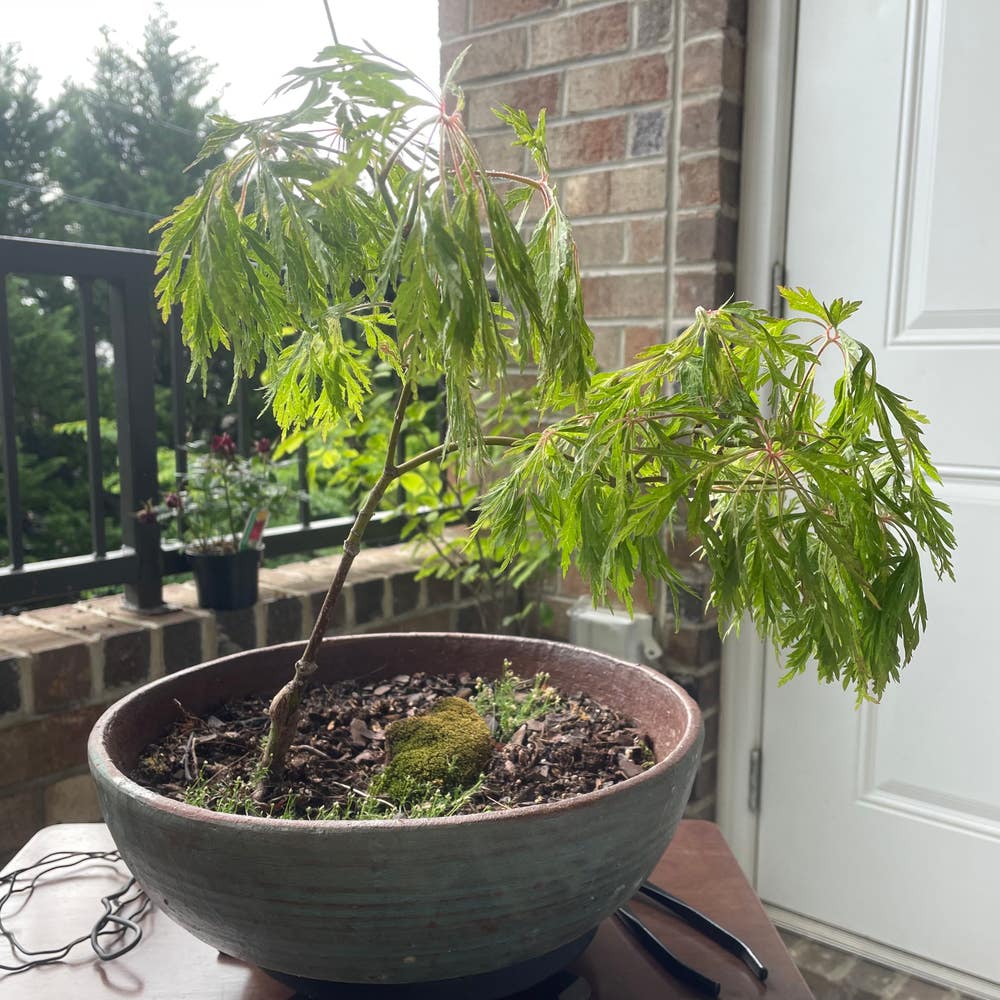





































Japanese Flowering Quince
About Japanese Flowering Quince
Japanese Flowering Quince is a relatively rare houseplant 🌿 that is easy to grow and needs regular watering to thrive. They do best in long-lasting, direct light ☀️ and should be less than 1 foot from a window.
Japanese Flowering Quince likes soil that is well draining. Your plant shouldn't need added fertilizers if you repot each time it doubles in size.
Japanese Flowering Quince belongs to the Chaenomeles genus, and is native to Japan and South Korea.
Taxonomy

Chaenomeles japonica
Chaenomeles
Rosaceae
Rosales
Also known as
Japanese quince and Maule's quince

How to care for Japanese Flowering Quince
How often to water your Japanese Flowering Quince

every 9
Japanese Flowering Quince needs 0.5 cups of water every 9 when it doesn’t get direct sunlight and is potted in a 5" pot.
Use our water calculator to personalize watering recommendations to your environment or download Greg for more advanced recommendations for all of your plants.

Water 0.5 cups every
9
Finding light for Japanese Flowering Quince in your home

a window
Japanese Flowering Quince love being close to bright, sunny windows 😎.
Place it less than 1ft from a south-facing window to maximize the potential for growth.
Japanese Flowering Quince does not tolerate low-light 🚫.
Select your region to see how the current weather in your area affects the placement of Japanese Flowering Quince in your home 🏡.
How to fertilize Japanese Flowering Quince

Most potting soils come with ample nutrients which plants use to produce new growth.
By the time your plant has depleted the nutrients in its soil it’s likely grown enough to need a larger pot anyway.
To replenish this plant's nutrients, repot your Japanese Flowering Quince after it doubles in size or once a year—whichever comes first.
-
I’ve been looking for another Toyo-Nishiki flowering quince since my cats killed mine last year. Super excited to have finally found some! #NewPlant #floweringquince #BravelyBonsai
-
Spring is here, and bonsai maintenance has started! I worked on my Japanese maple ‘Fairy Lights’ and my flowering quince’Toyo Nishiki’! #BeforeAndAfter photos below 🌿 I remember that last fall a couple of people were asking about what to do for their bonsai trees, and I promised to post in the spring. Was that you, @sarahsalith and @Nataliesplants ? I’m posting step by step in the comments, if you’re still interested! I’ll also be making posts for my other trees in the coming weeks 😄 #BravelyBonsai #Bonsai #JapaneseMaple #JapaneseFloweringQuince
Care Summary for Japanese Flowering Quince

Japanese Flowering Quince
 Greg recommends:
Greg recommends:
 Water
Water
0.5 cups every 9 days
 Placement
Placement
< 1ft from a window
 Nutrients
Nutrients
Repot after 2x growth
Based on the 4” pot your plant is in, and that it doesn’t get direct sunlight.

 Trending in your area
Trending in your area
 Similar to Japanese Flowering Quince
Similar to Japanese Flowering Quince
✨ Discover rare plants

Aglaonema Spitfire

Variegated Arrowhead …

Lavandula Pedunculata

Miss All-American Bea…

White Apple Moth Orch…

Rainbow Echeveria

Chinese Evergreen 'Ga…

Hoya fitchii

Joan Daniel Echeveria

Orange Lipstick Plant

Dinteranthus microspe…

Rhipsalis clavata

Betel

Royal Flush Split Rock

Marquise de Sevigne

Tuber Fleeceflower

Anthurium Fingers































